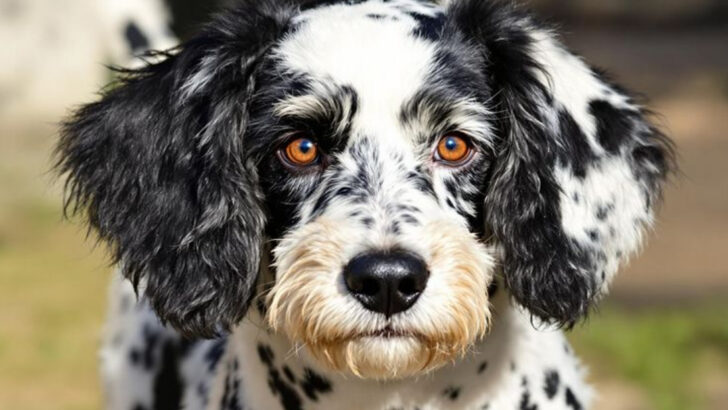That fancy pedigree? It might be more fiction than fact.
Before you start defending your pup’s pristine bloodline, take a good look at that tail curl…
Or those unexpected polka dots.
Or that howling yodel that sounds suspiciously Husky-ish.
Dog DNA doesn’t lie—
but breeders, shelters, and sketchy online ads? Sometimes they do.
Maybe your “purebred” is part couch potato, part goat impersonator, and 100% mystery mutt.
And honestly? That just makes them cooler.
But if you’re still clinging to those papers, this list might shake your faith.
Here are 18 telltale signs that your so-called purebred is living a double life—
and loving every minute of it.
Unusual Coat Colors
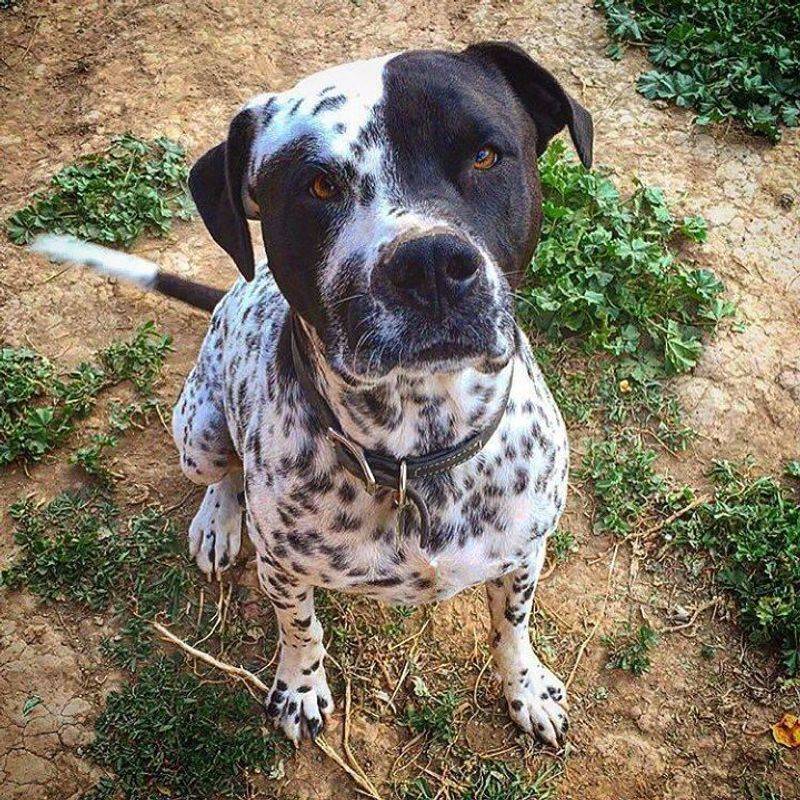
Imagine a German Shepherd with a sky-blue coat. Strange, right? Well, such unusual coat colors are not typical for the breed. A purebred dog’s coat color should align with its breed standard. If your Golden Retriever has spots like a Dalmatian, it might hint at mixed ancestry.
Colors outside accepted ones can indicate cross-breeding, even if subtle. A reputable breeder will ensure coat colors are consistent with breed norms. It’s crucial to compare your dog’s coat with breed specifics.
Fun fact: Some rare colors may arise from genetic mutations, adding a unique flair to your furry friend.
Size Discrepancies
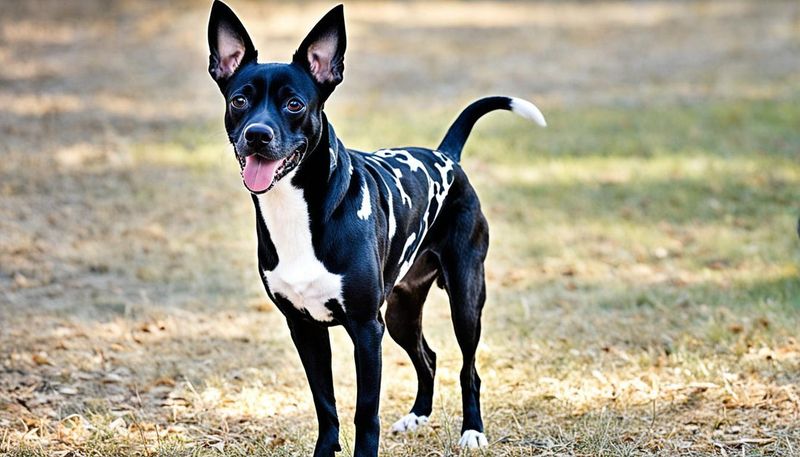
Have you ever seen a tiny Great Dane or an oversized Chihuahua? Size discrepancies can be a giveaway that your dog isn’t purebred. Each breed has a standard size range, and significant deviations might suggest mixed lineage.
A larger-than-life Pomeranian may look adorable but raises questions about its pedigree. Often, size anomalies in dogs are due to cross-breeding with different sized breeds.
Reputable breeders focus on maintaining breed standards, including size. If your dog is dramatically outside the typical size for its breed, it might be time to delve deeper into its genetics.
Odd Eye Colors
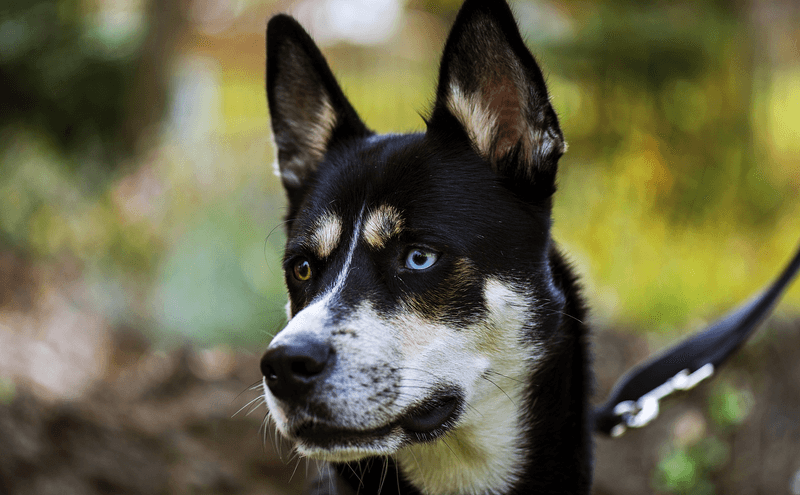
Picture a Siberian Husky with emerald green eyes. Odd, isn’t it? Eye color variations can be a sign of mixed ancestry in dogs. Purebred dogs typically have specific eye colors dictated by breed standards.
While heterochromia can occur naturally, certain eye colors might suggest a non-purebred background. If your dog’s eye color stands out, it might be an indication of a surprise in its lineage.
Did you know? Heterochromia, where a dog has two different colored eyes, is often more common in mixed breeds than purebreds, adding an intriguing twist to their appearance.
Behavioral Anomalies
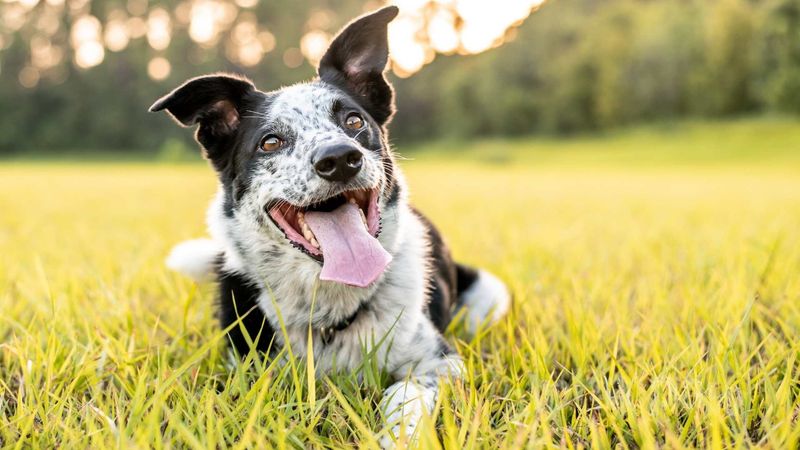
Ever seen a Border Collie that doesn’t herd? Behavioral anomalies in dogs can hint at mixed ancestry. Each breed has its typical behavior patterns, and deviations might indicate a cross-breed.
For instance, if a usually independent Afghan Hound is overly clingy, it may have a mixed lineage. Behavior is often linked to genetics, and crossing breeds can result in unexpected traits.
Understanding your dog’s behavior can provide insights into its true nature and possibly its ancestry. If your dog’s actions don’t match its breed’s typical traits, it could be a clue to its mixed heritage.
Tail Shape Variations
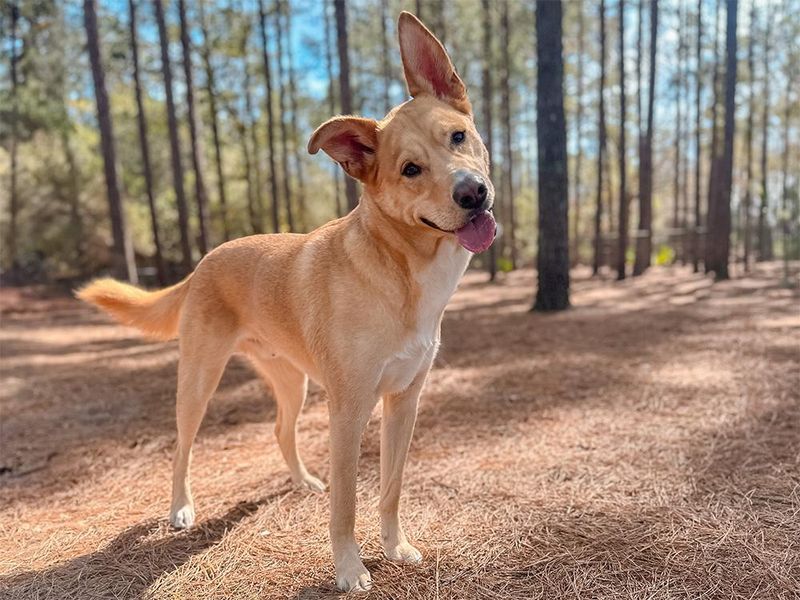
Consider a Labrador with a curled tail. Intriguing, right? Tail shape variations can signal mixed lineage. Purebred dogs have breed-specific tail shapes, and deviations may indicate cross-breeding.
A Labrador Retriever, for example, should have a straight, otter-like tail. If your dog’s tail is curly or kinked, it might suggest a blend of breeds.
Fun fact: Some tail shapes, like the corkscrew tail, are more common in mixed breeds, adding character and uniqueness to your dog. If your dog’s tail isn’t typical of its breed, it might be a clue to its ancestry.
Ears That Don’t Match
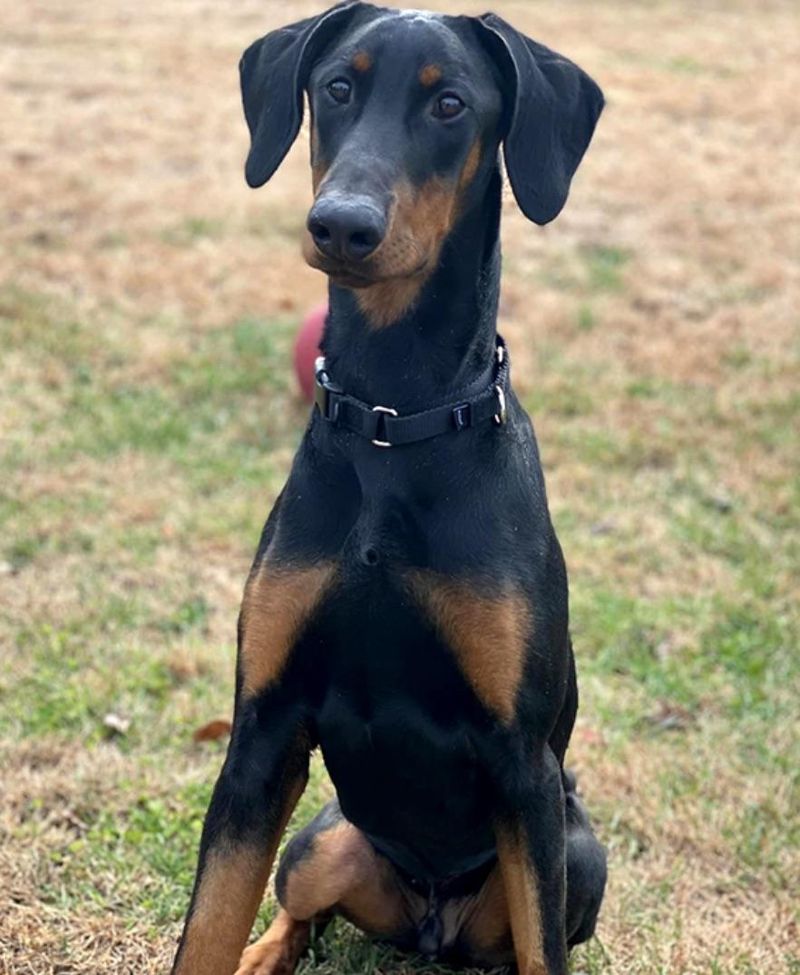
What if your Doberman has one floppy ear? Ears that don’t match the breed standard can be a sign of non-purebred heritage. Purebred dogs have specific ear shapes, and mismatches might hint at a mixed background.
Imagine a Beagle with pointed ears; it raises questions about its lineage. Different ear shapes can result from genetic diversity in mixed breeds.
Understanding ear types can provide insights into your dog’s ancestry. If your dog’s ears don’t align with its breed’s standard, it may be a clue to its mixed lineage, enhancing its charm and character.
Mismatched Fur Length

Imagine a Shih Tzu with a smoothly trimmed coat on one side and long flowing locks on the other. Mismatched fur length can be a sign of mixed ancestry. Purebred dogs possess consistent fur lengths as defined by their breed standards.
When fur length varies unusually, it could indicate cross-breeding. For example, a short-haired Collie might hint at unexpected heritage.
Did you know? Many mixed breeds sport such unique fur patterns, adding to their distinct appearance. If your dog’s fur length doesn’t match its breed’s typical look, it might be an indicator of mixed lineage.
Unusual Markings
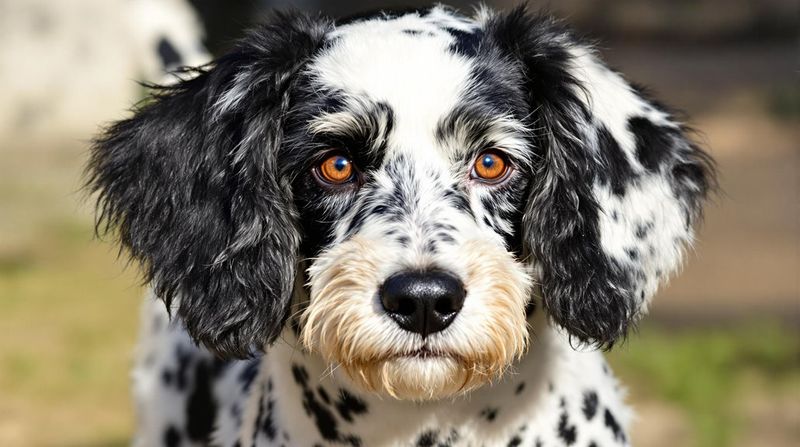
Imagine a Dalmatian with unusual stripes. Unusual markings can hint at a non-purebred background. Purebred dogs have recognized markings, deviations might suggest cross-breeding.
A Bulldog with spots like a leopard may raise questions about its ancestry. Markings often result from genetic combinations, adding unique flair to dogs with mixed heritage.
Fun fact: Some unusual markings can be due to rare genetic mutations, creating a one-of-a-kind appearance. If your dog’s markings don’t align with its breed, it could be a clue to its rich genetic tapestry.
Unexpected Vocalizations
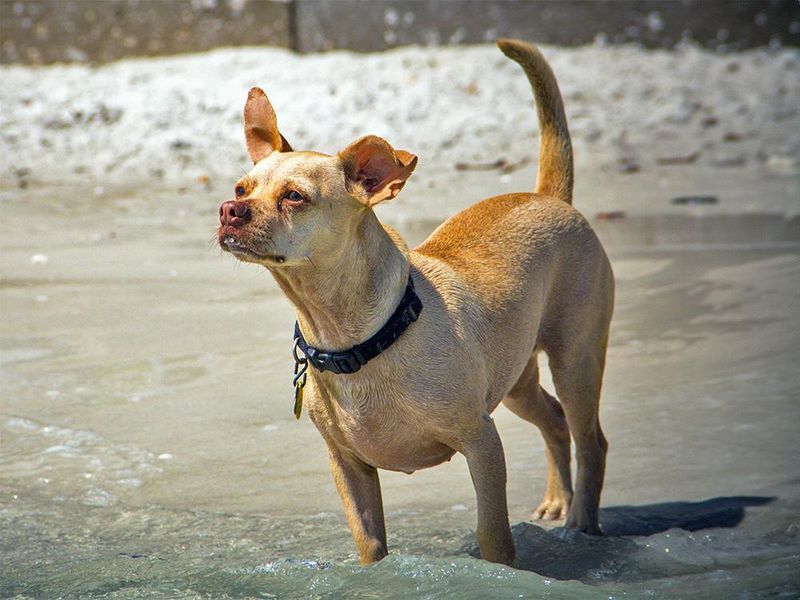
Imagine a Chihuahua with a deep, booming bark. Unexpected vocalizations can signal mixed lineage. Purebred dogs typically have breed-specific sounds; deviations might hint at cross-breeding.
A Poodle that howls like a wolf may possess a unique genetic mix. Vocalization traits are often inherited, and unexpected sounds could reveal an intriguing ancestral blend.
Did you know? Some mixed breeds develop unusual vocal patterns, adding personality and charm. If your dog’s vocalizations don’t align with its breed’s standard, it might be a clue to its diverse lineage.
Different Body Proportions

Consider a Dachshund with a long body and short legs. Body proportions that differ from breed standards can hint at mixed ancestry. Each breed has specific proportions, and deviations may suggest cross-breeding.
A Labrador with unusually short legs might raise questions about its lineage. Body proportions often result from genetic factors, creating unique combinations in mixed breeds.
Understanding your dog’s body structure can provide insights into its genetic background. If your dog’s proportions differ from its breed’s norms, it might be a clue to its diverse heritage, enhancing its distinct appearance.
Paw Size Anomalies
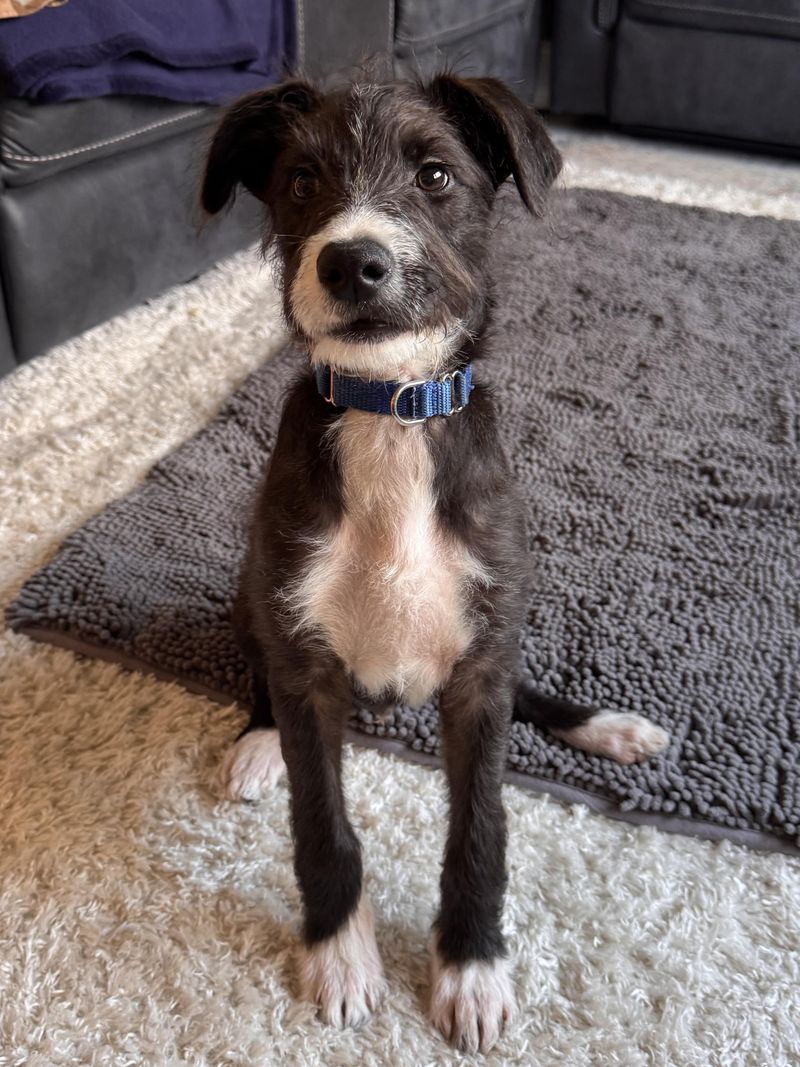
Imagine a puppy with paws as big as a bear’s. Paw size anomalies can signal mixed lineage. Purebred dogs have specific paw sizes, and significant deviations might suggest a cross-breed.
A Terrier with large, fluffy paws may raise questions about its genetics. Paw size often correlates with a dog’s overall build; unexpected sizes might hint at mixed ancestry.
Fun fact: Some mixed breeds inherit oversized paws, leading to a charmingly awkward appearance. If your dog’s paw size doesn’t align with its breed’s norm, it might be a clue to its rich genetic history.
Odd Dental Structure
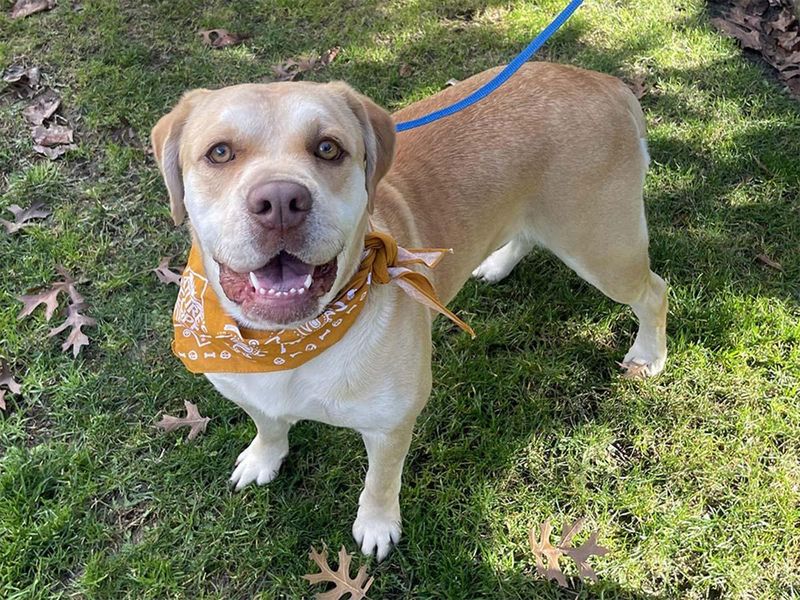
Ever seen a Bulldog with an overbite? Odd dental structures can be clues to mixed ancestry. Purebred dogs have specific dental alignments, and anomalies might indicate cross-breeding.
A German Shepherd with a protruding underbite may suggest a unique genetic makeup. Dental traits are often inherited and deviations can hint at a blend of breeds.
Did you know? Some mixed breeds exhibit quirky dental characteristics, adding to their unique charm. If your dog’s dental structure doesn’t match its breed’s standards, it could be a clue to its diverse heritage.
Temperament Surprises
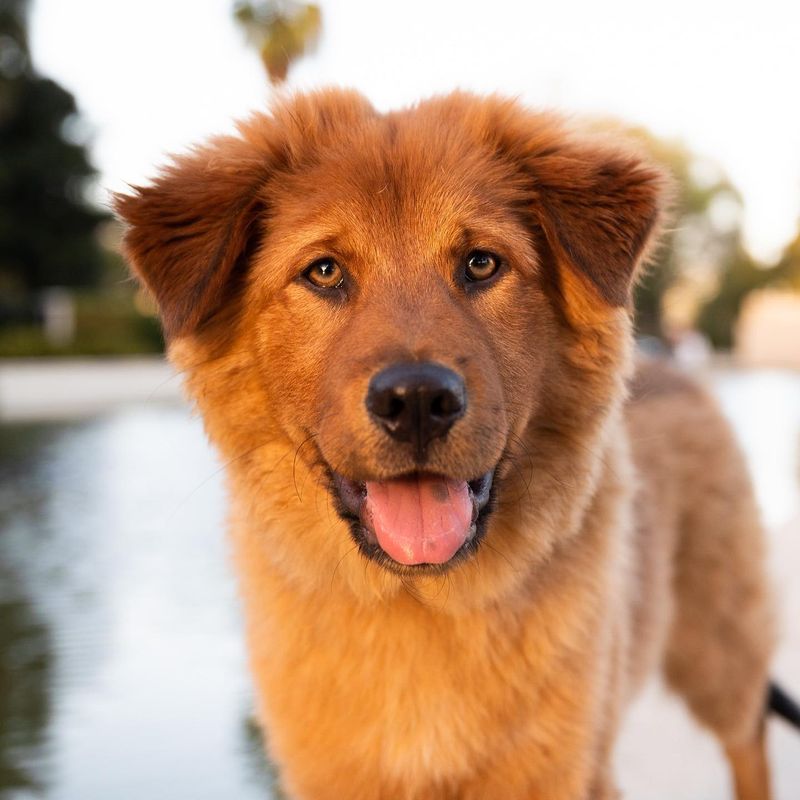
Imagine a typically gentle Golden Retriever showing signs of aggression. Temperament surprises can indicate mixed ancestry. Each breed has characteristic temperaments, and deviations might suggest cross-breeding.
A Shih Tzu that’s unusually timid could raise questions about its lineage. Temperament is often linked to genetics, and unexpected traits might reveal an intriguing mix.
Understanding your dog’s temperament can provide insights into its true nature and possibly its ancestry. If your dog’s behavior deviates from its breed’s norms, it might be a clue to its diverse genetic background, adding depth to its personality.
Uncommon Health Issues
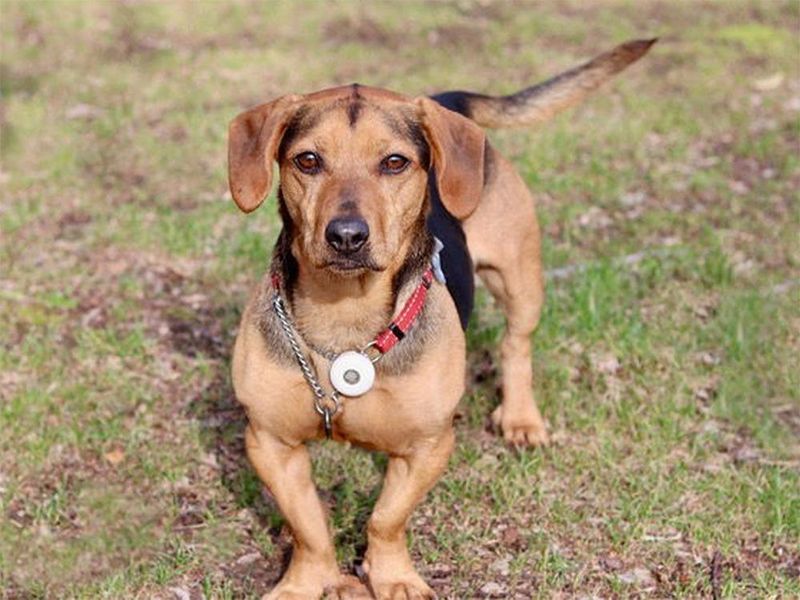
Consider a young Beagle diagnosed with hip dysplasia. Uncommon health issues can signal mixed lineage. Purebred dogs often have breed-specific health profiles, and unexpected conditions might suggest cross-breeding.
A Dachshund with vision problems may hint at a diverse genetic mix. Health traits are influenced by genetics, and rare conditions might indicate a blend of breeds.
Did you know? Mixed breeds can inherit unique health conditions, adding complexity to their care. If your dog’s health issues don’t align with its breed’s typical profile, it might be a clue to its rich genetic tapestry.
Coat Texture Variations

Imagine a Poodle with both curly and smooth patches. Coat texture variations can hint at mixed ancestry. Purebred dogs possess consistent coat textures defined by their breed standards.
A Boxer with a silky coat might suggest unexpected heritage. Coat texture is often genetically influenced, and variations can reveal a blend of breeds.
Fun fact: Many mixed breeds showcase diverse coat textures, adding to their unique appearance. If your dog’s coat texture doesn’t match its breed’s typical look, it might be an indicator of mixed lineage, enhancing its distinct charm.
Non-Standard Gait
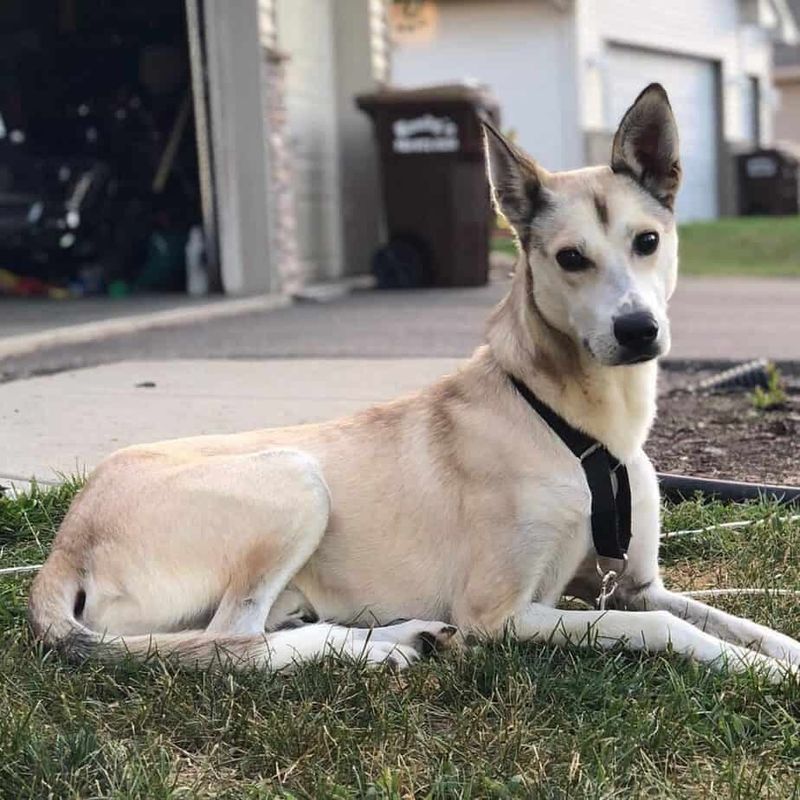
Imagine a Greyhound with a hopping stride. Non-standard gaits can signal mixed lineage. Each breed has characteristic gaits, and deviations might suggest cross-breeding.
A Cocker Spaniel with a shuffling walk may raise questions about its ancestry. Gait is often linked to genetics, and unexpected patterns might reveal an intriguing blend.
Understanding your dog’s movement can provide insights into its true heritage. If your dog’s gait deviates from its breed’s norms, it might be a clue to its diverse genetic background, adding to its unique character.
Surprising Intelligence Levels
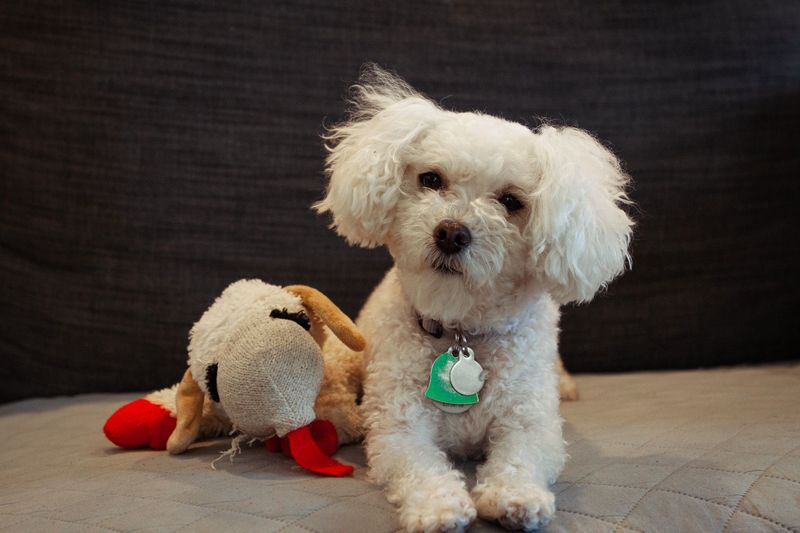
Imagine a Poodle solving complex puzzles. Surprising intelligence levels can indicate mixed ancestry. Each breed has characteristic intelligence traits, and deviations might suggest cross-breeding.
A Bulldog that excels in problem-solving may hint at a unique genetic makeup. Intelligence is often linked to genetics, and unexpected levels might reveal a blend of breeds.
Did you know? Some mixed breeds exhibit remarkable intelligence, adding to their unique charm. If your dog’s intelligence level doesn’t align with its breed’s norms, it might be a clue to its diverse heritage, enhancing its personality.
Unusual Activity Levels
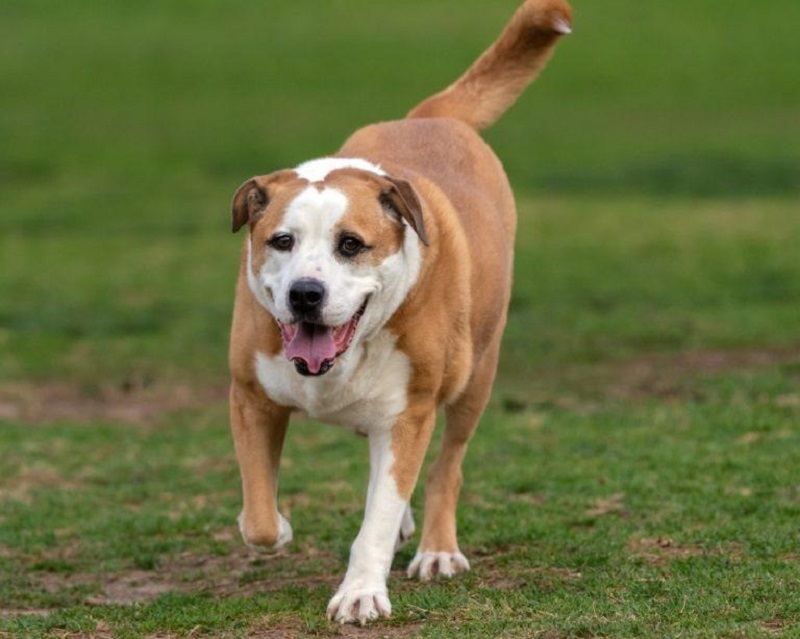
Consider a Bulldog with the energy of a Border Collie. Unusual activity levels can signal mixed lineage. Each breed has characteristic activity levels, and deviations might suggest cross-breeding.
A Basset Hound that’s constantly on the move may raise questions about its genetics. Activity levels are influenced by genetics, and unexpected energy might hint at a blend of breeds.
Fun fact: Many mixed breeds display diverse activity levels, adding to their dynamic nature. If your dog’s activity level doesn’t match its breed’s norms, it might be a clue to its diverse genetic background, enhancing its lively character.

